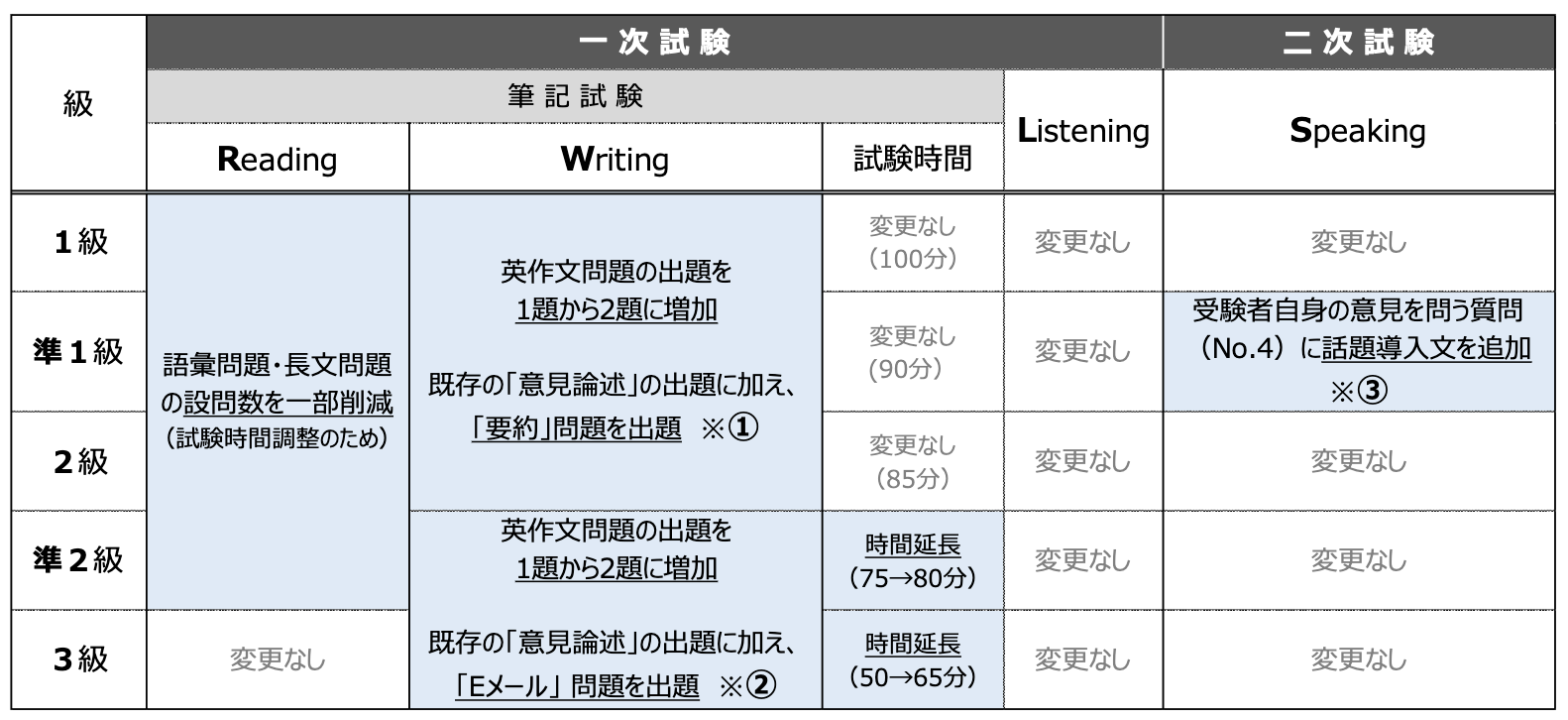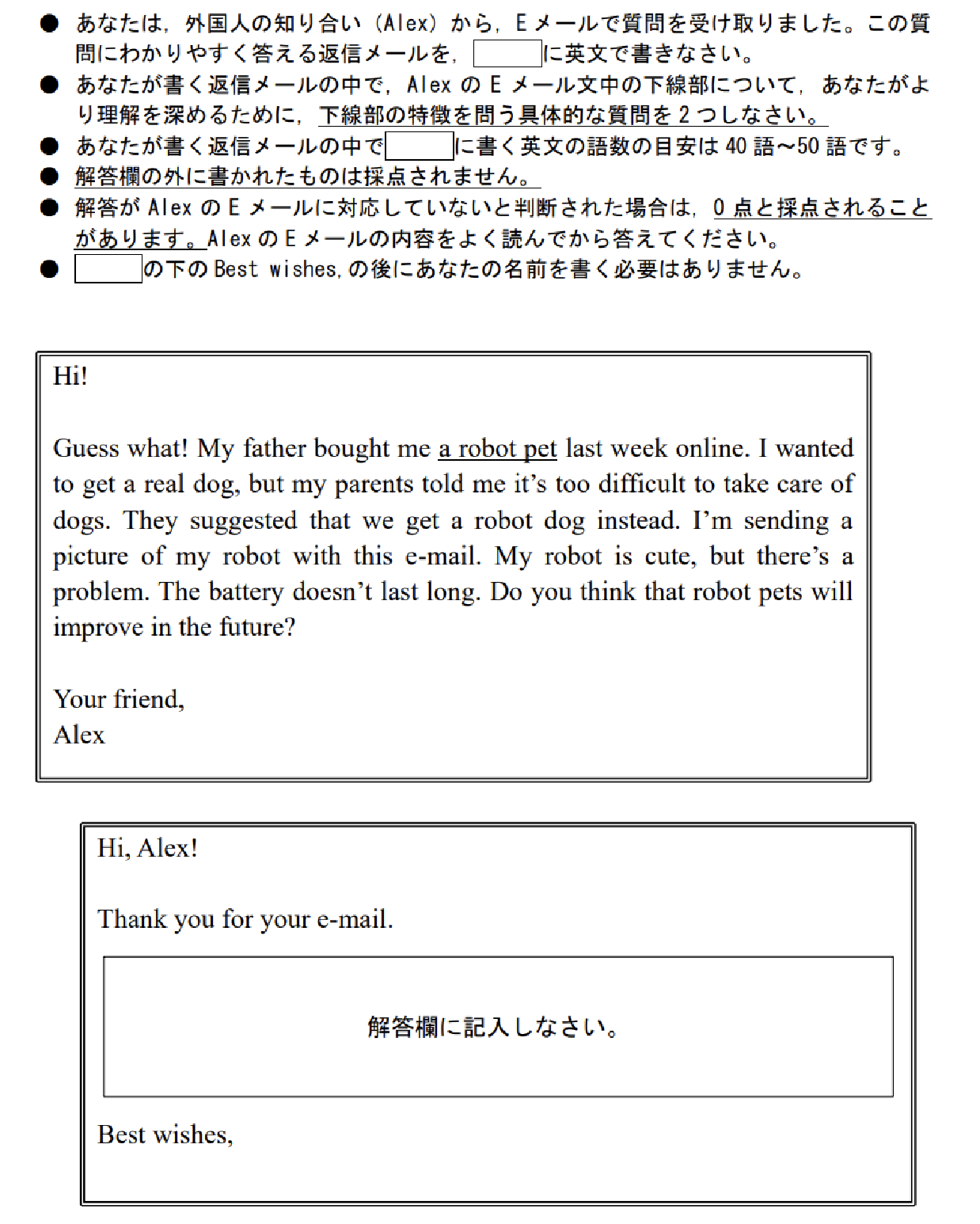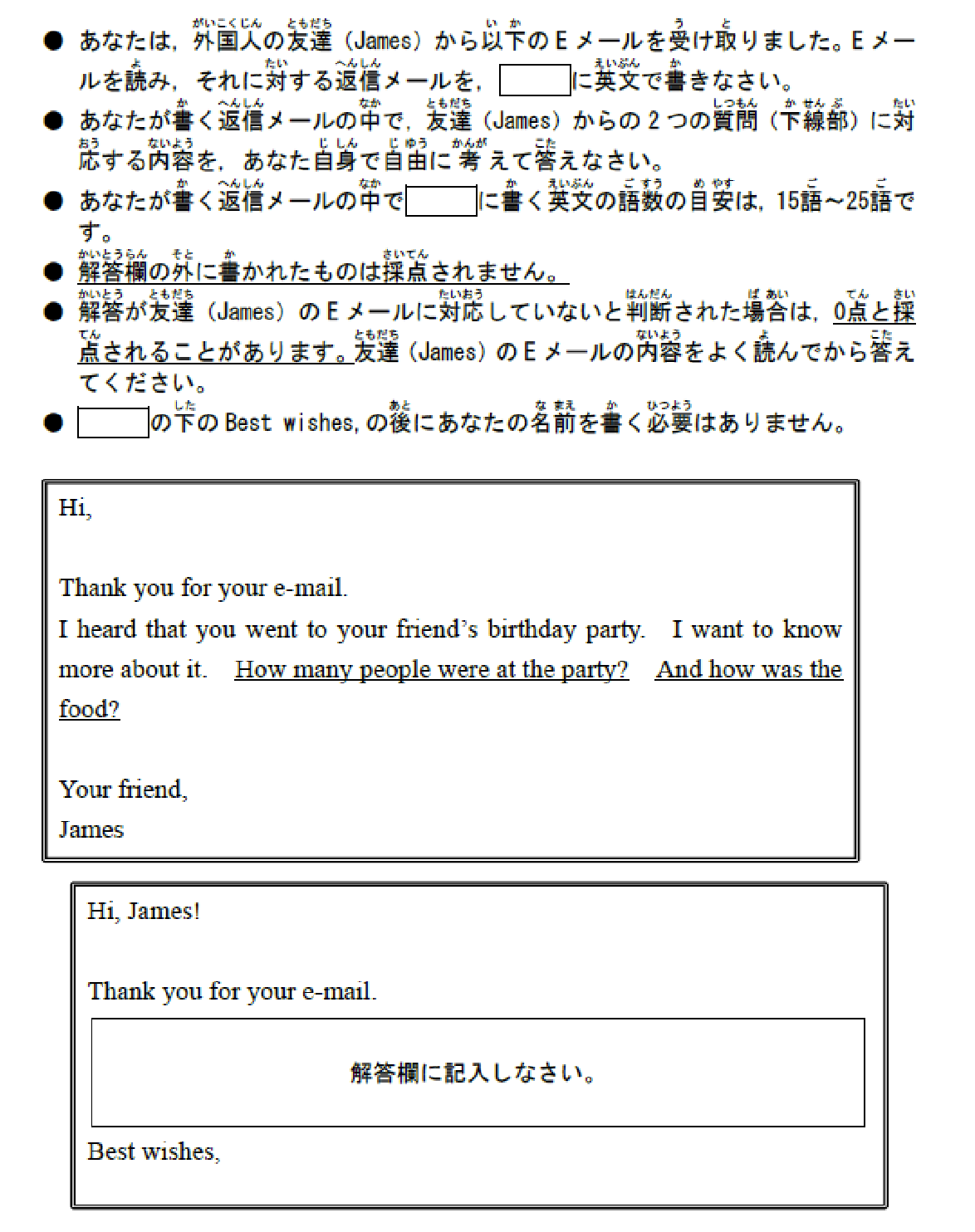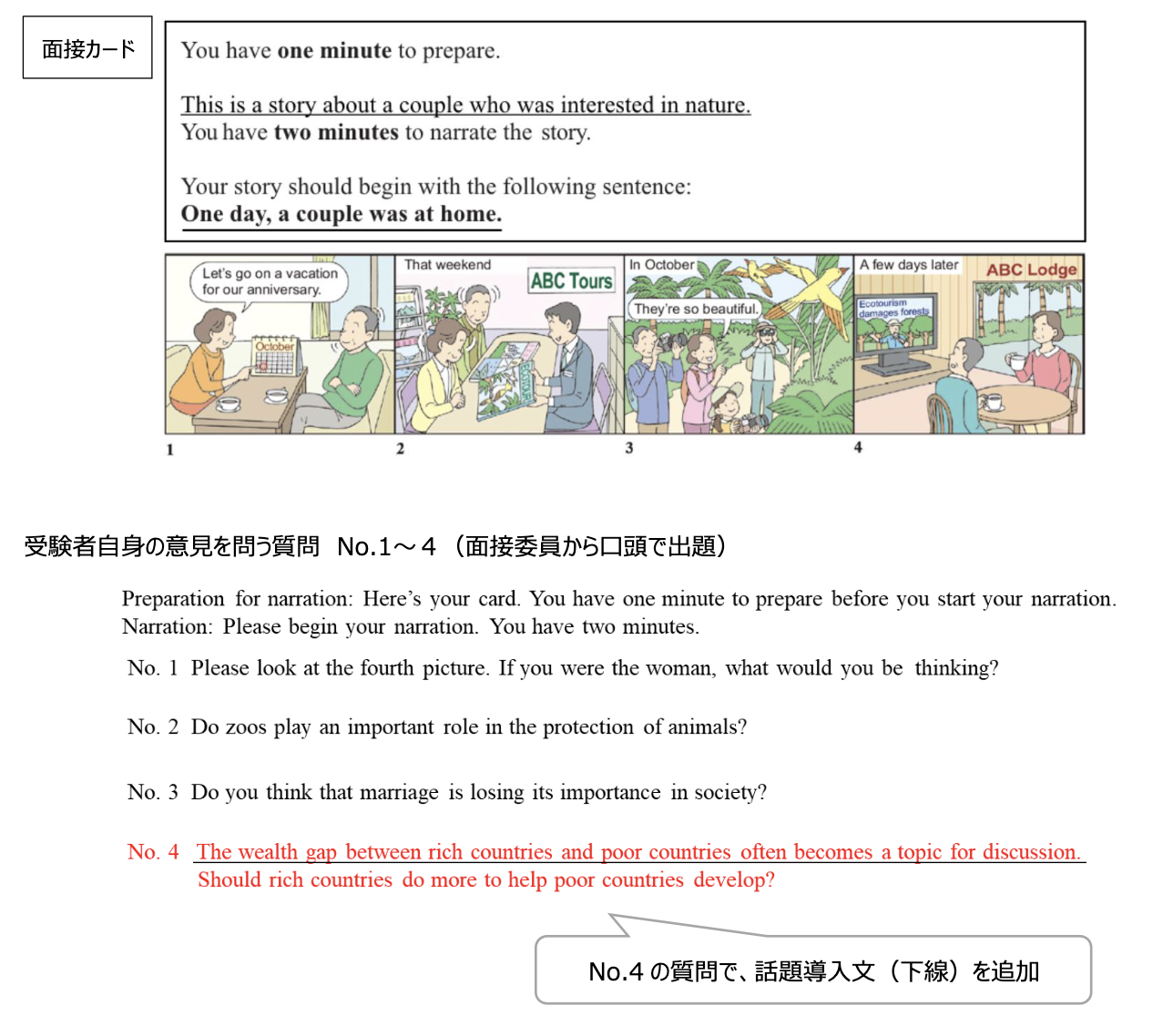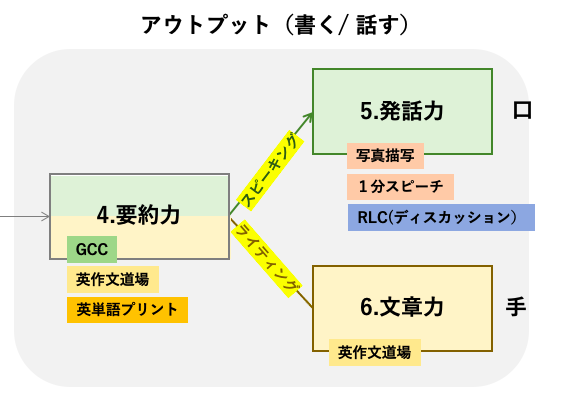2024年度から英検の出題形式が変わります。変更点の説明と、特に重要な「英文要約のコツ」について解説
COLUMNウィリーズ英語塾コラム
2023.08.17
英検
4技能
ライティング
テーマ:
2024年度から英検が変わります! 〜 変更点のまとめと「英文要約のコツ」〜
2024年度から英検の出題形式が変わります。変更点の説明と、特に重要な「英文要約のコツ」について解説します。
変更があるのは3級以上(4級と5級は変更なし)
受験生にとって特に重要なのは(1) ライティングの重要性が更に高まります!
1)【ライティング】英検1級から3級のライティング問題が「1題」から「2題」に増えます
・1級/準1級/2級: 既存の「意見論述」に加え「要約」問題が追加
・準2級 / 3級: 既存の「意見論述」に加え「Eメール」問題が追加
2)【リーディング】英検1級から準2級のリーディングの設問数が時間調整のため一部削除されます
3)【スピーキング】英検準1級のスピーキング(二次試験)に、受験者自身の意見を問う質問に話題導入文が追加されます
4)【リスニング】変更はありません
5)英検準2級と3級の試験時間が若干延長されます。1級から2級の試験時間は変更ありません
・準2級: 75分→ 80分に延長
・3級: 50分→ 65分に延長
(出典:日本英語検定協会HP)
変更の背景
学習指導要領の「外国語」が大きく変わりました。そこでは知識習得だけでなく、英語を使ったコミュニケーションを行う能力、つまり英語での思考力、判断力、表現力が求められてきています。英検もそれに合わせ今回リニューアルすることになりました。
(詳しくは:日本英語検定協会HPを参照ください)
英検1級/ 準1級/ 2級:ライティング「要約」問題例
英検1級に追加される「要約問題」
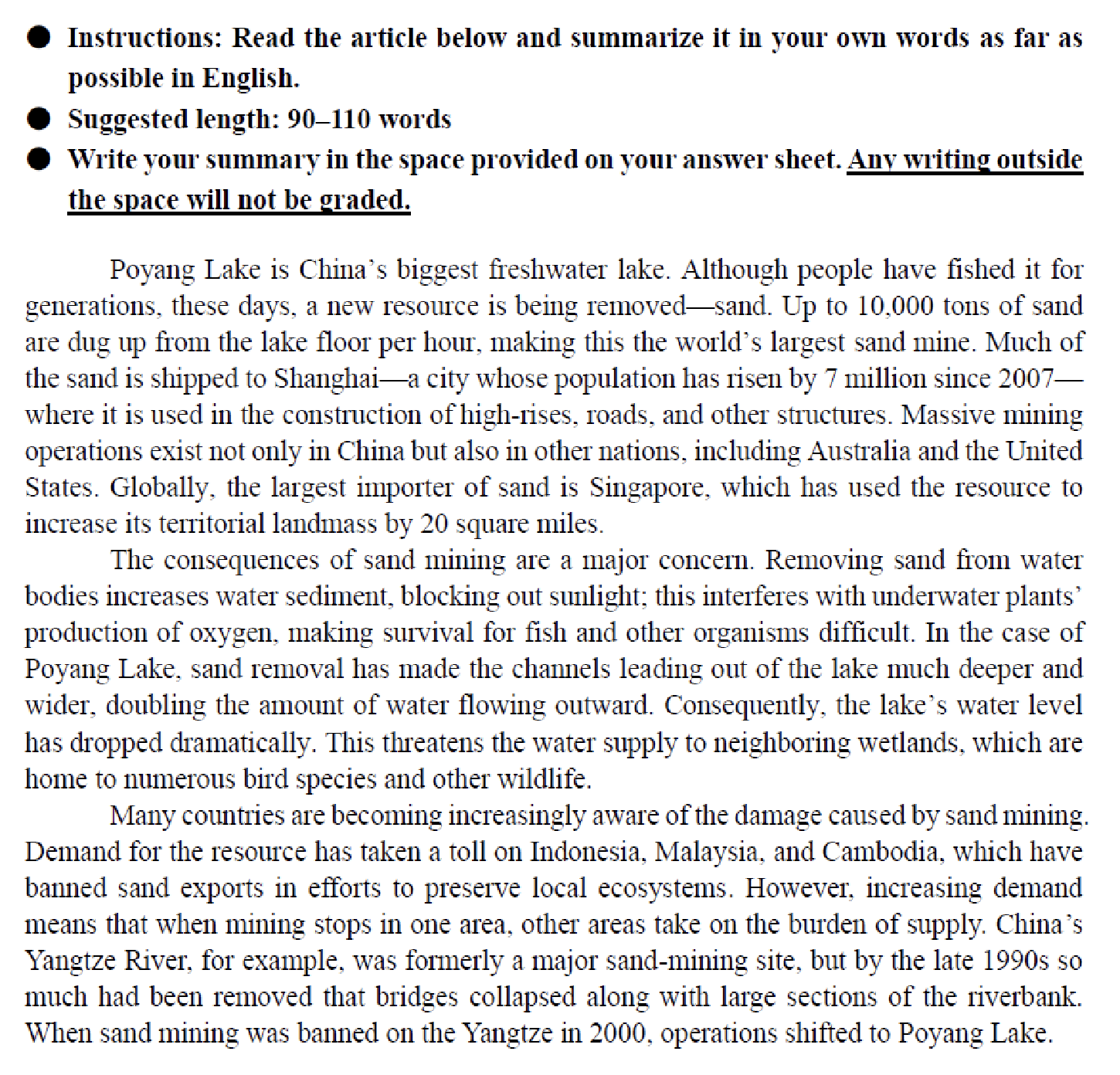 (出典:日本英語検定協会HP)
(出典:日本英語検定協会HP)
英検準1級に追加される「要約問題」
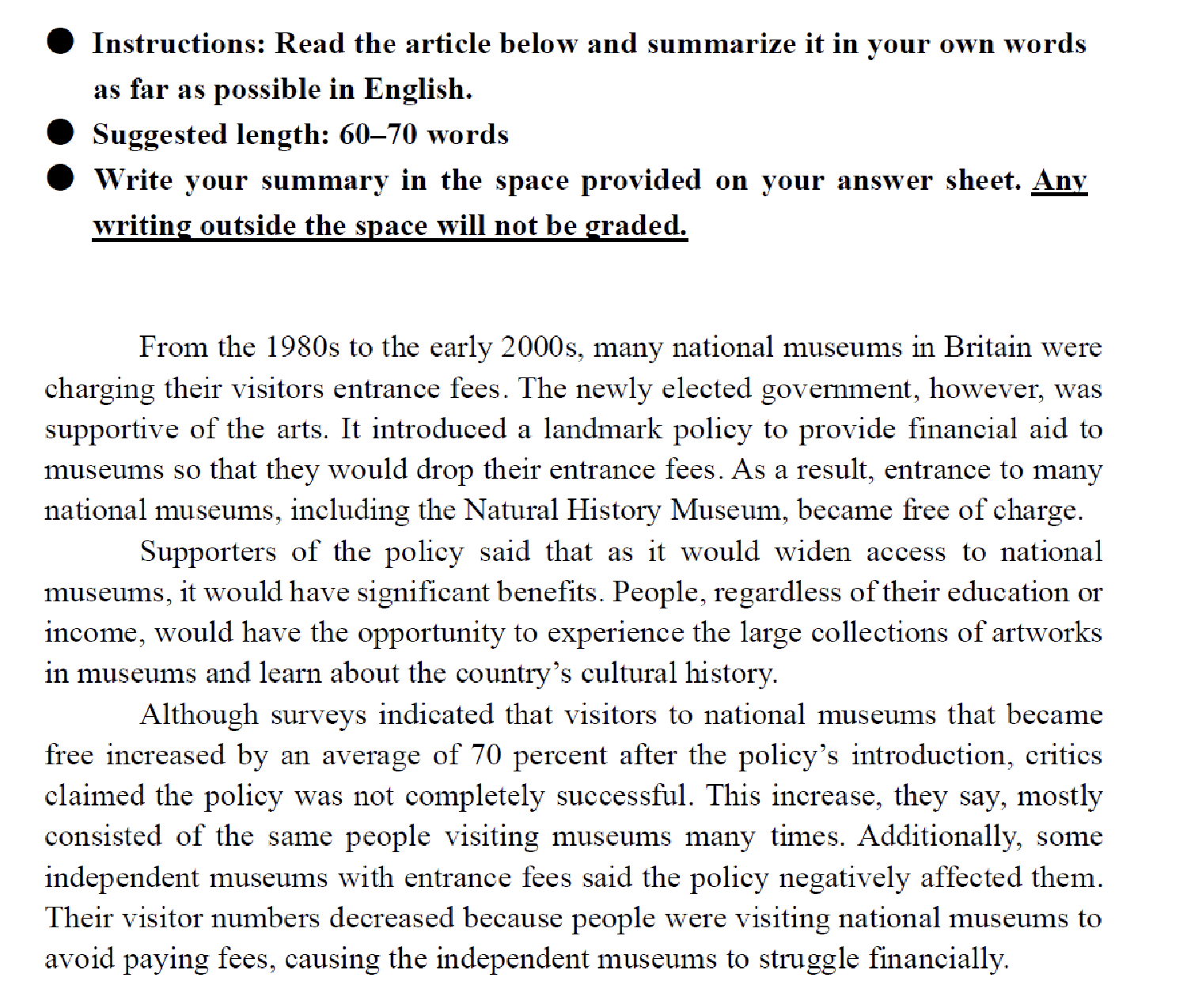
(出典:日本英語検定協会HP)
英検2級に追加される「要約問題」
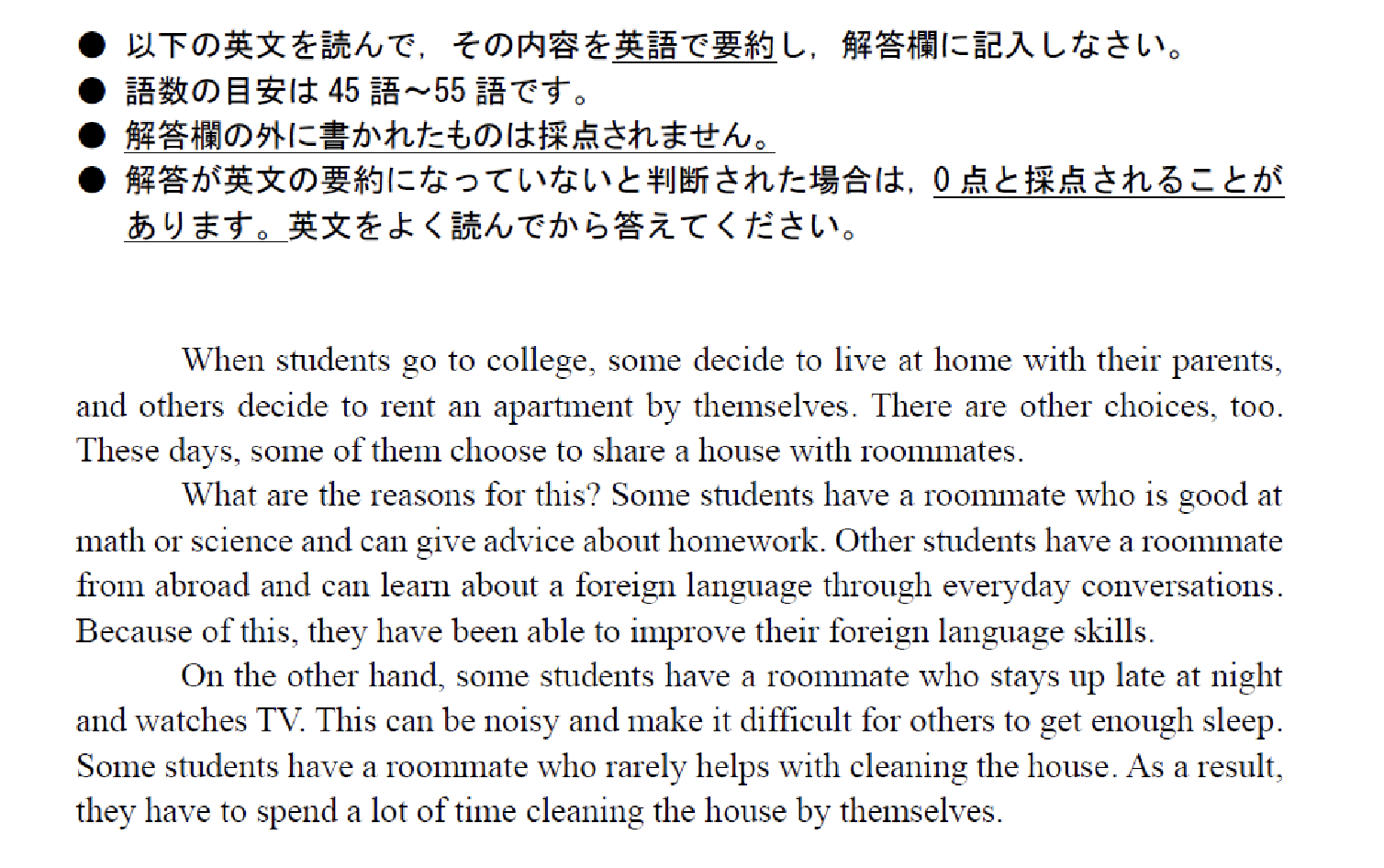
(出典:日本英語検定協会HP)
各級ともにまず英文を読んで理解する必要がありますが、各レベルを受験される方であれば問題のないレベルです。普段から要約のトレーニングを行っておく必要があります。
英検2級 / 準2級:ライティング「Eメール」問題例
英検準2級に追加される「Eメール」問題
英検3級に追加される「Eメール」問題
英検準1級スピーキング(二次試験)の「話題導入文」問題例
英検1級 / 準1級/ 2級の「要約」のコツ
英文の要約とは、オリジナルの文章を読まなくても要約を読みさえすれば、その文章の重要なポイントが理解できるものをいいます。そのため単に文章をまとめるだけでは高得点を狙うことはできません。やってみると意外と難しいので、以下のコツを理解し、実際にトレーニングをすることをおすすめします。
英文の要約のコツ
-
主題と主張を特定する
要約する前に、文の主題と主張を明確に理解しましょう。これによって、何が重要な情報であるかを把握できます。 -
要点の絞り込み:
全ての詳細を含める必要はありません。本質的な要点に絞り込り、余計な情報を省きましょう。 -
簡潔さと明確さ:
要約は簡潔で明確に書くことが大切です。冗長な表現や複雑な文構造は避け、シンプルな言葉を使いましょう。 -
オリジナルの言葉で再構築:
要約はあくまで元の情報を短縮して表現するものですが、できるだけオリジナルの言葉で再構築することを心がけましょう。 -
時制と人称の一貫性:
要約の中で一貫した時制と人称を使うことで、読みやすさと理解のしやすさが向上します。 -
重要なキーワード:
オリジナル文に含まれる重要なキーワードや専門用語を要約に取り入れることで、要点が明確になります。 -
情報の順序:
要約は元の文の情報を論理的な順序で整理し直すことも大切です。論理的な流れを保ちつつ、必要な情報を抜け漏れなく含めましょう。
英検1級や準1級のレベルでは、各段落ごとに簡単にポイントを箇条書きでまとめ、それから要約文の作成にとりかかることをおすすめします。
英作文の対策についてはこちらもご確認ください。
英文の「要約」例
実際にBBCの記事を使って要約例を説明します。英検1級レベルの文章ですが、参考にしてみてください。
Climate change and nutrient pollution are driving the oxygen from our oceans, and threatening many species of fish.
That’s the conclusion of the biggest study of its kind, undertaken by conservation group IUCN.
While nutrient run-off has been known for decades, researchers say that climate change is making the lack of oxygen worse.
Around 700 ocean sites are now suffering from low oxygen, compared with 45 in the 1960s. Researchers say the depletion is threatening species including tuna, marlin and sharks.
* Concerns over ocean heating report
* Last decade ‘on course’ to be warmest
* Birds ‘shrinking’ as the climate warms
The threat to oceans from nutrient run-off of chemicals such as nitrogen and phosphorus from farms and industry has long been known to impact the levels of oxygen in the sea waters and still remains the primary factor, especially closer to coasts.
However, in recent years the threat from climate change has increased.
As more carbon dioxide is released enhancing the greenhouse effect, much of the heat is absorbed by the oceans. In turn, this warmer water can hold less oxygen. The scientists estimate that between 1960 and 2010, the amount of the gas dissolved in the oceans declined by 2%.
That may not seem like much as it is a global average, but in some tropical locations the loss can range up to 40%.
Even small changes can impact marine life in a significant way. So waters with less oxygen favour species such as jellyfish, but not so good for bigger, fast-swimming species like tuna.
“We have known about de-oxygenation but we haven’t known the linkages to climate change and this is really worrying,” said Minna Epps from IUCN.
“Not only has the decline of oxygen quadrupled in the past 50 years but even in the best case emissions scenario, oxygen is still going to decline in the oceans.”
For species like tuna, marlin and some sharks that are particularly sensitive to lack of oxygen – this is bad news.
Bigger fish like these have greater energy needs. According to the authors, these animals are starting to move to the shallow surface layers of the seas where there is more of the gas dissolved. However, this make the species much more vulnerable to over-fishing.
If countries continue with a business-as-usual approach to emissions, the world’s oceans are expected to lose 3-4% of their oxygen by the year 2100.
This is likely to be worse in the tropical regions of the world. Much of the loss is expected in the top 1,000m of the water column, which is richest in biodiversity.
Low levels of oxygen are also bad for basic processes like the cycling of elements crucial for life on Earth, including nitrogen and phosphorous.
“If we run out of oxygen it will mean habitat loss and biodiversity loss and a slippery slope down to slime and more jellyfish,” said Minna Epps.
“It will also change the energy and the biochemical cycling in the oceans and we don’t know what these biological and chemical shifts in the oceans can actually do.”
Changing the outcomes for the oceans is down to the world’s political leaders which is why the report has been launched here at COP25.
“Ocean oxygen depletion is menacing marine ecosystems already under stress from ocean warming and acidification,” said Dan Laffoley, also from IUCN and the report’s co-editor.
“To stop the worrying expansion of oxygen-poor areas, we need to decisively curb greenhouse gas emissions as well as nutrient pollution from agriculture and other sources.”
(出典:BBC News)
要約例
Climate change and nutrient pollution are depleting ocean oxygen, endangering fish species. A major study by IUCN reveals 700 sites now have low oxygen, up from 45 in the 1960s. Climate change intensifies oxygen loss, exacerbated by nutrient run-off. Carbon dioxide absorption warms oceans, reducing oxygen. Species like tuna, marlin, and sharks are at risk due to their sensitivity to oxygen levels. Fish seek shallower waters for oxygen but become over-fished. Inaction will lead to 3-4% oxygen loss by 2100, affecting biodiversity and elemental cycles. Urgent emissions reduction and pollution control are needed to save marine ecosystems.
いかがでしょうか?あくまでも例示ですが上記で示した7つのコツに従って書いています。
-
主題と主張の特定:
要約の中心は「気候変動と栄養汚染が海洋から酸素を奪い、魚の種を脅かしている」という主題と主張です。この主張が要約の中心となります。 -
要点の絞り込み:
主要な要点として、「気候変動と栄養汚染が海洋の酸素不足を引き起こし、魚の生態系に悪影響を及ぼしていること」が取り上げられています。具体的な数値や例も要点として絞り込まれています。 -
簡潔さと明確さ:
要約は簡潔で明確に書かれており、冗長な情報や複雑な表現は避けられています。必要な情報だけが取り上げられています。 -
オリジナルの言葉で再構築:
要約は元の文章を再構築していますが、オリジナルの意味は失われていません。専門用語もそのまま取り入れられています。 -
時制と人称の一貫性:
要約では一貫して現在形が使われており、人称も一致しています。 -
重要なキーワード:
要約には「climate change」「nutrient pollution」「ocean oxygen」「fish species」など、重要なキーワードが含まれています。 -
情報の順序:
要約は元の文章の論理的な流れを保ちつつ、必要な情報をコンパクトにまとめています。
要約問題で便利な書き出し表現
英文の要約をする際の「書き出し」にはいくつかの一般的な表現があります。以下にいくつかの例を挙げてみましょう。
-
In the given passage/article/text: 与えられた文章/記事/テキストでは…
-
According to the author/speaker: 著者/話者によれば…
-
The text discusses/examines/explores: このテキストは議論/検討/探究しています…
-
The passage highlights/focuses on: この文章は強調/焦点を当てています…
-
The author presents/proposes/asserts: 著者は提示/提案/主張しています…
-
The main idea/theme of the text is: このテキストの主なアイデア/テーマは…
-
The article addresses the issue of: この記事は問題に取り組んでいます…
-
In the following passage, the author discusses: 次の文章では、著者が議論しています…
-
The text provides insights into: このテキストは…についての洞察を提供しています…
-
The passage delves into the topic of: この文章は…について詳しく掘り下げています…
これらの表現を使って、要約の始めにどのように情報を導入するかを工夫することで、要約の質と読みやすさを向上させることができます。適切な表現を選んで、オリジナル文章の主題や内容を適切に導入してください。
英作文道場で鍛えましょう!
英作文のトレーニングが必要な方は、ぜひこちらの記事もご確認ください。
また英作文は理解するだけでなく、実際に手を動かして何度も英文を作成しないと上達は見込めません。 WiLLies Englishの英作文道場で1ヶ月でも良いのでトレーニングすることをおすすめします。またWiLLies Englishの英検コースでは、旺文社の英検教材やWiLLiesオリジナルの問題を使って対策を行うことができます。
英作文道場でできること:
-
毎週届くWiLLiesオリジナルの英検ライティング問題:
WiLLies独自の英検対策問題が週ごとに届きます。これに挑戦して、創造力を伸ばしましょう。(今後「要約」問題にも対応予定です) -
自分の作文を持ち込んでフィードバックを受けられる:
自分の書いた文章を持ち込むことも可能です!専門家からの建設的な意見や改善点を受けて、表現力を向上させましょう。 -
1~2日で返信:
学びをスピーディに実感しましょう。提出した英作文は迅速に確認され、1~2日で添削されたものが返ってきます。さらに、モデルの解答例も提供されるので、参考にすることができます。
WiLLies Englishの英作文道場で、皆さんの英語のライティングスキルを向上させましょう!
おすすめの関連記事
CATEGORY
人気記事
テーマを表示

